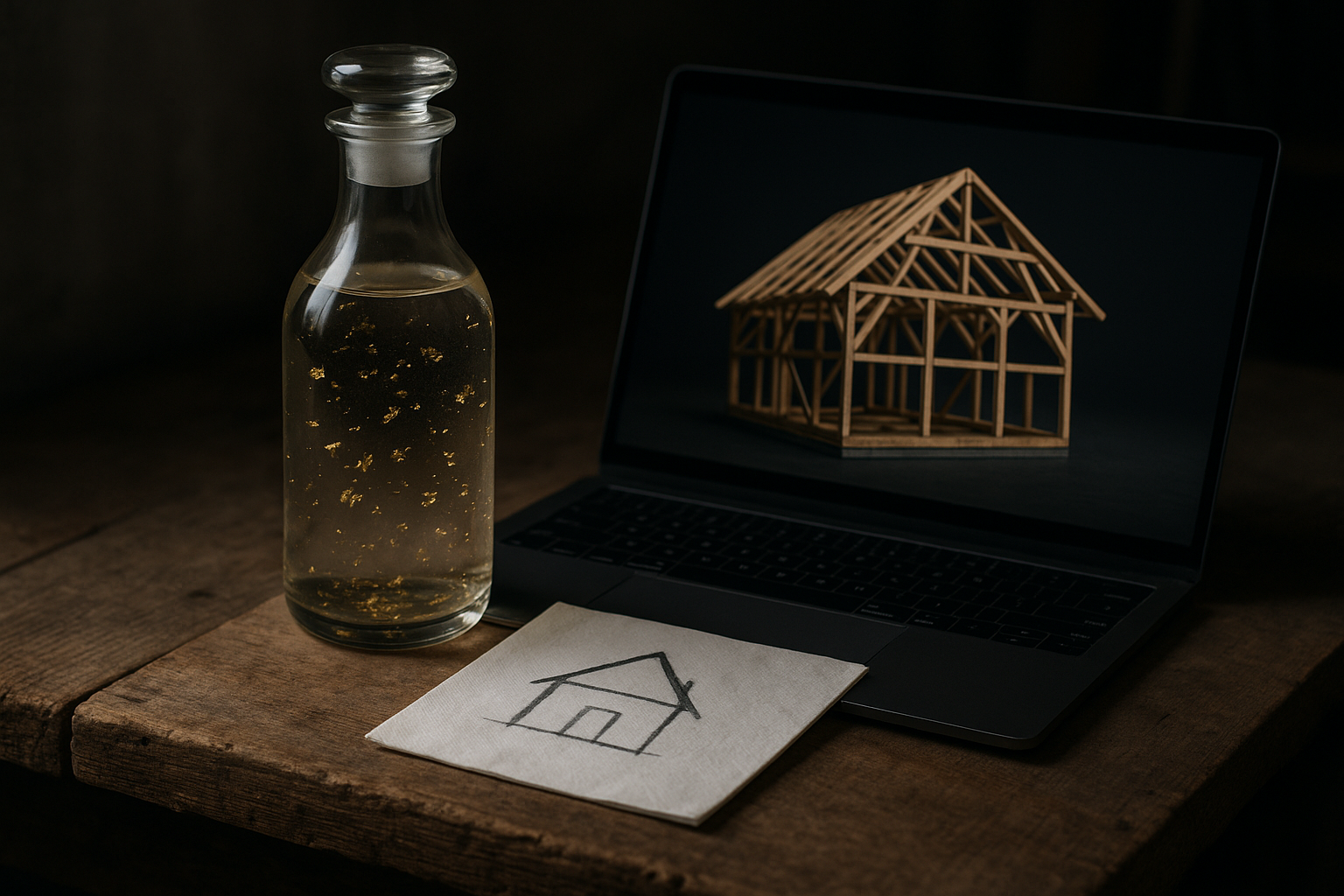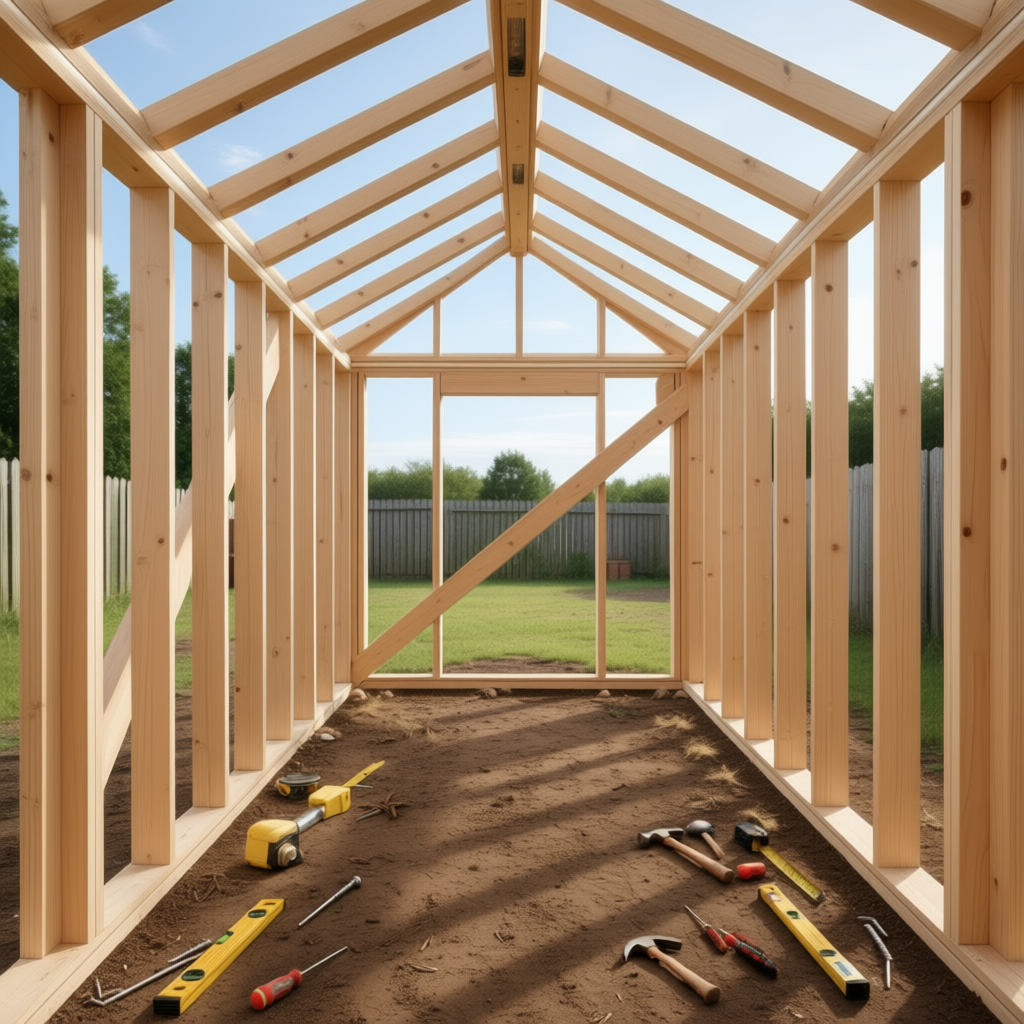Beyond the Barn: Global Timber Frame Trends 2025
Global timber frame trends for 2025—Japan to Scandinavia, curves, modern rustic, gardens, and biophilic design.
Beyond the Barn: Global Timber Frame Trends for 2025 — From Japan to Your Garden
When you picture a timber frame home, you might imagine a rustic English barn that once housed a cow named Bessie—or an alpine chalet missing its cheese platter. But today’s timber architecture is evolving faster than your dog chasing squirrels.
In 2025, global influences—from Japan’s refined minimalism to Scandinavia’s bright simplicity—are completely redefining what’s possible with wood. And trust us, these trends are so compelling that even your cat will approve (though they’ll still knock things off shelves, because, well… cats).
Here’s a tour of the global timber frame design trends inspiring builders, architects, and DIY dreamers worldwide—plus some reality checks about what happens when beautiful design meets everyday life.
1. Global Masters: Japan and Scandinavia (Where Wood Performs Magic)
In Japan, timber construction isn’t just building—it’s an art form older than your great-grandma’s recipe collection. Over 90% of detached homes use wooden post-and-beam systems, and their legendary Japanese joinery creates structures that stand strong without a single nail or metal fastener. It’s basically the world’s most sophisticated Lego set—one you can actually live in.
Modern Japanese architecture blends these ancient techniques with Biophilic Design, using natural materials, open spaces, and perfectly framed garden views to create harmony between home and nature. The result? Spaces so tranquil you’ll forget about that 2 a.m. email deadline.
(Reality check: Your Japanese-inspired minimalist living room will look absolutely serene—until your toddler discovers the “perfect hiding spot” behind that delicate shoji screen.)
Meanwhile, in Sweden and Norway, timber dominates 90% of low-rise housing. Scandinavian design focuses on light, efficiency, and calm functionality—creating warm, minimal homes that thrive in cold climates through airtight construction and triple glazing. These homes are so cozy even polar bears would want to move in (though we don’t recommend sending invitations).
2. The Rise of Modern Rustic and Hybrid Homes (Where Heritage Meets Contemporary Living)
The leading aesthetic for 2025 is Modern Rustic—a blend of raw, textured timber with sleek, contemporary finishes. Imagine your grandfather’s workshop meeting a luxury spa.
Picture this: a great room framed with soaring glulam trusses, a minimalist kitchen in fingerprint-hiding matte black, and massive glass panels connecting indoors and outdoors so you can watch your dog’s squirrel-chasing escapades in 4K.
This fusion of old-world warmth and modern precision defines luxury timber homes today. Builders are increasingly mixing materials—charred wood (Shou Sugi Ban), metal panels, and lime render—giving each project a bold architectural identity.
(Pro tip: That beautiful matte black kitchen? It hides absolutely nothing. Prepare for a daily forensic record of every paw print and 3 a.m. snack expedition.)
3. Elegant Curves and Organic Shapes (Finally, Architecture That Feels Like a Hug)
After decades of rigid geometry that made homes feel like they were designed by robots with protractors, curves are making a comeback. Engineered timbers like Glulam now allow for arched beams, curved roofs, and sculptural staircases that flow like living forms—because, honestly, straight lines are starting to feel predictable.
These organic shapes soften interiors and add a sense of movement and craftsmanship. Expect to see more arched garden studios (perfect for escaping your kids), domed pavilions (ideal for afternoon naps), and circular skylights that let you stargaze without getting grass stains on your pajamas.
(Warning: Your cat will quickly discover that curved beams make perfect racetracks. Consider yourself warned.)
4. Timber Frame Conquers the Garden (Because the Living Room Got Crowded)
Timber isn’t just for houses anymore—it’s the go-to material for creating outdoor sanctuaries. Post-pandemic, homeowners are investing in spaces that blend indoor comfort with outdoor freedom. Translation: we all need an escape route when family game night turns competitive.
Outdoor kitchens and dining pavilions – the new status symbol for entertaining. Nothing says “I have my life together” like grilling salmon while your neighbor’s BBQ bursts into flames. - Garden offices – insulated, private, and sustainable. Perfect for Zoom calls where you can pretend you’re in a mountain retreat instead of hiding from Mount Laundry. - Poolside bars and cabanas – giving gardens permanent resort vibes. Your backyard might get so fancy you’ll start charging family for towel service.
These smaller builds let homeowners experience timber frame living without a full-scale project. Plus, they make perfect hiding spots when you need five minutes of peace.
(Important note: Your new garden office will become the neighborhood cats’ favorite vacation spot within 48 hours. Stock up on catnip.)
5. Biophilic Design: Living with Nature (Because Plants Don’t Judge Your Life Choices)
At the heart of all these trends lies Biophilic Design—architecture that nurtures our instinctive connection to nature. Exposed beams, visible joinery, and natural finishes promote calm and well-being. Studies show that wood interiors reduce stress, improve focus, and encourage relaxation.
Essentially, your house becomes your personal therapist. And unlike your in-laws, timber never asks awkward questions at dinner.
6. Conclusion: The World Builds in Wood (And Your Pets Are Thrilled)
The 2025 design landscape celebrates timber as both ancient and futuristic—a material of warmth, strength, and endless innovation. Whether you’re drawn to Japanese precision, Nordic simplicity, or modern rustic charm, timber framing has become a global design language that even Google Translate understands.
Your dream home—with its elegant curves, natural textures, and peaceful connection to nature—is waiting to be framed in wood.
And while you’re designing that perfect space, remember: your dog will find the one beam perfect for ear-scratching, your cat will claim the highest point as their throne, and your kids will transform that minimalist space into an epic fort.
That’s not a design flaw—that’s home.
FAQ (With Universal Appeal)
What makes Japanese timber joinery so special? Japanese craftsmen build structures that last centuries without nails—just incredibly precise wood connections. It’s like the world’s most impressive 3D puzzle you can live inside. Bonus: burglars won’t even find a normal door handle.
Are Scandinavian timber homes really that energy efficient? Absolutely. Their airtight construction and triple glazing keep interiors warm through brutal winters. Your heating bill will drop so low you’ll have extra money for Swedish meatballs.
Can I build a timber garden office without breaking the bank? Definitely. Smaller timber structures are far more affordable than full homes and add real property value. Plus, free entertainment: watching squirrels argue over territory never gets old.
Why are curved timber designs trending in 2025? Curves make spaces softer, more inviting, and structurally strong. They also double as cat highways and perfect hiding spots when dodging relatives’ holiday calls.






